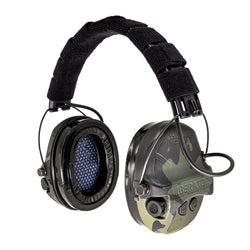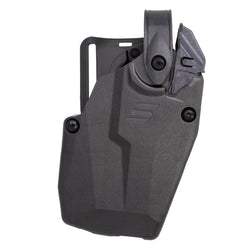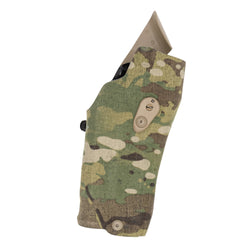The United States Navy turns 250 years old on October 13. In that time, the Navy has gone from an underdog revolutionary fleet to the most powerful maritime force to ever sail the world’s oceans, a distinction it has enjoyed since 1943.
Despite its long, distinguished history, Hollywood has really only chronicled the Navy’s exploits since World War II, and most Navy-themed movies focus on that vast conflict, which was, after all, history’s most far-flung naval war. Like the entire war movie genre, naval-themed films range from excellent to poor, with most residing somewhere in the middle.
In honor of the Navy’s birthday, here are our choices, in order of release date, for US Navy movies guaranteed to put the wind in your sails and the tang of salt air in your nose. Or something like that. Some of these are obvious, while a few are partially forgotten gems that deserve to be remembered.
They Were Expendable (1945)
Directed by John Ford, this tale of PT Boats in the Philippines in the Second World War’s early days stars Robert Montgomery and John Wayne. The Japanese move south after Pearl Harbor ran the Navy’s small, poorly supported Asiatic Fleet out of the Southwest Pacific in short order, leaving behind a small PT Boat squadron to fight a short-lived guerrilla-style campaign.

They Were Expendable, based on the book of the same name, is a fictional account of real events that took place in late 1941 into early 1942, when PT Boat Squadron 3 took on Japanese cruisers and destroyers in and around the Philippine Archipelago.
The events follow characters based on squadron commander John D. Bulkeley (Montgomery’s character), who won the Medal of Honor, and his executive officer, Robert Kelly (the Duke’s character). Montgomery was a natural choice since he commanded a PT Boat during the war. He filled in for Ford when the director fell and broke his leg during filming.
Some events are fictional, but the film accurately depicts WWII PT Boat operations, including the evacuation of General Douglas MacArthur and his family from the Philippines after the country fell to Japanese troops. Like the book, the movie exaggerates the PT Boats’ capabilities somewhat, but it’s still a solid film dealing with a mostly forgotten subject.
The Caine Mutiny (1954)
The Caine Mutiny is based on Herman Wouk’s Pulitzer Prize-winning novel of the same name. Humphrey Bogart is predictably superb as the erratic and seemingly paranoid Lt. Commander Phillip Francis Queeg, skipper of the WWII destroyer/minesweeper USS Caine. Queeg is a strict disciplinarian, setting him at odds with the Caine’s crew when he assumes command. The appearance of cowardice while supporting an amphibious landing against a Japanese-held island adds fuel to the fire, as the crew dubs their captain “Old Yellowstain” in response.
Queeg’s erratic behavior eventually leads to his officers relieving him of command during a typhoon. The resulting court-martial leads to high drama as the Caine’s officers, and Queeg himself, are placed under the legal microscope.

The Navy cooperated with the filming, though it was uncomfortable with the idea of a mutiny on board one of its ships. This concern was alleviated by inserting an epigraph immediately following the opening credits, which reads: “There has never been a mutiny in a ship of the United States Navy. The truths of this film lie not in its incidents, but in the way a few men meet the crisis of their lives.”
A 2020 New York Magazine article listed The Caine Mutiny among “The Best Movies That Lost Best Picture at the Oscars.” Bogart was nominated for Best Actor, Tom Tully for Best Supporting Actor, and Stanley Roberts for Best Screenplay, among several other nominations.
The Caine Mutiny directly influenced the drafting of the 25th Amendment, which provides for the removal of an incompetent President of the United States. The film served as a warning of what might happen without clear procedures in such a situation. On a side note, actor Michael Caine took his stage name from the movie.
The Bridges at Toko-Ri (1954)
The Bridges at Toko-Ri is the rare Korean War movie, made even rarer because of its naval focus. Based on James Michener’s Pulitzer Prize-winning novel of the same name, and starring William Holden and Grace Kelly, the film follows a group of US Navy aviators assigned to destroy several heavily defended North Korean bridges while flying from the fictional aircraft carrier USS Savo Island.

Like the novel, the movie is a gritty look at war, unlike the glossy, highly patriotic films of the 1940s. The main character, Navy pilot Harry Brubaker, complains about being recalled for the war, having established a successful law practice following WWII. Brubaker’s character led many to characterize The Bridges at Toko-Ri as a low-key anti-war movie, reinforced by the intense (for the time) combat scenes.
Michener based his novel on operations against North Korean bridges when he was a war correspondent on the Carriers Essex and Oriskany, and Brubaker was based on the real-life Lieutenant Donald Brubaker, whose situation was similar to the character in the book and film.
The movie shows great shots of the Grumman F9F Panther fighter jet and portrays early air-sea rescue techniques using helicopters. The helicopter rescue is based on two actual events. The Panther fighters were those of the Oriskany’s VF-192, the “Golden Dragons,” and the carrier scenes were shot onboard the Oriskany and the USS Kearsarge.
The Enemy Below (1957)
Robert Mitchum and Curt Jürgens star in this tale of cat and mouse between an American destroyer escort and a German U-boat. The Enemy Below is based on a novel of the same name by British naval officer Denys Rayner, himself a World War II anti-submarine warfare officer. The film changed the destroyer escort to an American, instead of a British, ship.

The movie also diverges from the book’s plot, but is effective nonetheless, depicting the intense nature of the Battle of the Atlantic, in which the Germans tried to cut off American and Canadian supplies for Great Britain with submarines. The climactic clash between the two vessels is based on a real encounter in May 1944.
Jürgens was a German actor who was sent to a labor camp in 1944 for openly complaining about the Nazi regime to three SS officers in a bar. He managed to escape and became an Austrian citizen after the war.
PT 109 (1963)
This rather obvious inclusion nonetheless deserves its spot on the list. PT 109 follows the exploits of Lieutenant (j.g.) John F. Kennedy, commander of that most famous of PT Boats in 1943.
Based on Robert J. Donovan’s book, the movie relates how the future President Kennedy assumed command of the beat-up, all but abandoned PT 109, assembled a crew, and supported the American advance through the Solomon Islands from Tulagi, and later, from Rendova Island’s PT-Boat base. Cliff Robertson was personally chosen to portray JFK by the president’s father, Joe Kennedy.

PT 109 accurately depicts PT Boat operations in the Solomons, including Kennedy’s successful rescue of some US Marines who had been pinned down on Choiseul Island, though that event took place after Kennedy took command of PT 59 following the 109’s sinking.
The 109’s crew’s ordeal after being rammed by a Japanese destroyer in the Blackett Strait on the night of August 1-2 is accurately portrayed, including their swim to a nearby island. After Kennedy’s extraordinary efforts to contact American boats in the strait, two Solomon Islanders and an Australian Coastwatcher helped get word to American forces, who rescued the surviving crew members on August 8.
PT 109 was released in the fall of 1963 but was pulled from theaters following President Kennedy’s assassination that November.

Tora! Tora! Tora! (1970)
The definitive Pearl Harbor movie, Tora! Tora! Tora! is based on historian Gordon Prange’s account of the infamous raid that brought the United States into World War II. The movie’s title refers to the Japanese raid commander’s coded transmission to his fleet, indicating that he had achieved complete surprise.
The film deliberately avoided big-time actors in order to spend more money on accurate sets and equipment, and to focus on the story itself. A scrupulous effort was also made to tell the Japanese side of the Pearl Harbor story as neutrally as possible, which is a notable feat for a war movie. Tora! Tora! Tora! succeeds in that effort, helped by enlisting actual Japanese participants as technical advisors, including Minoru Genda, the Japanese naval officer who largely planned the raid, and Mitsuo Fuchida, the pilot who led it. The movie was, unsurprisingly, a huge success in Japan.

Filmed in 1968 and 1969, compromises were made with aircraft and ships, such as using altered American aircraft as stand-ins for Japanese planes and using US Navy aircraft carriers instead of the Japanese ships, which had all been sunk during the war. Aside from a few small details, Tora! Tora! Tora! portrays the events of December 7, 1941 quite accurately, though the “sleeping giant” quote from Japanese Admiral Yamamoto is probably fictional, despite some claims to the contrary.
Film critics complained that the movie was boring, which is probably fair from a dramatic standpoint, but most agreed that it stood out from a documentary perspective. Given Hollywood’s penchant for screwing up a good war movie with unnecessary romantic drama (see 2001’s Pearl Harbor), I view that as a strength.
The aerial combat scenes from Tora! Tora! Tora! were used in other movies, including 1976’s Midway.
Midway (1976 and 2019)
I’m cheating by listing two movies here, but I believe they both deserve it. The Battle of Midway was the most spectacular victory of the US Navy’s long history. The 1976 movie took a similar approach to Tora! Tora! Tora!, though the screenwriters featured a fictional character, Charlton Heston’s Captain Matt Garth, and an unnecessary romantic angle featuring Garth’s estranged son and his half-Japanese girlfriend, who has been confined in an American internment camp.

Midway makes similar compromises to those in Tora! Tora! Tora!, which work quite well unless you’re a historical aircraft enthusiast. Genda was again consulted, though he was not present on the set. American pilot Dick Best, whose well-placed bomb sank the Japanese carrier Akagi during the battle, served as a technical consultant, along with Joseph Rochefort, whose code-breaking outfit at Pearl Harbor had correctly identified Midway as the Japanese objective in June, 1942, allowing the American ambush that sank four Japanese carriers. Interestingly, a television version, with an extra 45 minutes of footage was released soon after the theatrical run and is considered better than the cinema version.
The 2019 version of Midway covers the same events but is a different movie. I break with my fellow WWII historians in that I like this movie every bit as much as the 1976 film. The accuracy is there, and I like that much of the action focuses on Best instead of the fictional Matt Garth. I also like that Commander Edwin Layton, Admiral Nimitz’s intelligence chief, gets the credit he deserves, where he was portrayed as a fictional composite in the original.

Finally, the 2019 film’s combat scenes are much better thanks to modern technology, though the CG isn’t always perfect. I like Woody Harrelson as Nimitz, and I think his performance holds up against Henry Fonda’s from 1976. So, I recommend you watch both, as each has its strengths, and I think they complement one another. And who really needs an excuse to watch another good war movie anyway?
Top Gun (1986)
Another obvious choice, but I think it has to be included. Tom Cruise’s blockbuster was one of the top films of the 1980s and remains a cultural phenomenon. Top Gun is the movie that I expect most people reading this have seen, probably more than once, so I’ll keep it brief.
The carrier scenes are terrific. The F-14 Tomcat footage is even better. The characters are fun, from Cruise’s “Maverick” and Anthony Edwards’ “Goose” to Val Kilmer’s “Iceman.” This is the movie that made young men want to be Naval Aviators. Even the romantic angle was well-done. If you haven’t seen Top Gun, you’re wrong.

And personally, I think the long-awaited sequel, 2022’s Top Gun: Maverick is a worthy follow-up, even if it took 36 years to make. It hit the theaters right after COVID and was a welcome breath of fresh air: a fun, action-packed, unpolitical movie that aimed to entertain its audience, which it did. And the callbacks to the first movie were well-done.
Top Gun: Maverick was the first theatrical release I saw after COVID, and I really appreciated Cruise’s pre-film message to the audience. It made me like the guy. A third Top Gun movie is reportedly in the works. I hope they don’t go to the well once too often.
Men of Honor (2000)
Men of Honor is, frankly, an underrated film chronicling the career of the Navy’s first African American Master Diver, Master Chief Petty Officer Carl Brashear.
Brashear, played by Cuba Gooding, Jr., joined the Navy in 1949 and was assigned to the salvage ship USS Hoist as a cook. The Navy discouraged black sailors from jobs other than menial work at the time, despite President Harry Truman’s 1948 Executive Order desegregating the armed forces. Brashear’s lack of education also hurt him since he had been forced to leave school at age 13 to help his sharecropping family work their farm.

Brashear witnessed Navy Diver Leslie “Billy” Sunday rescue another diver who had fallen overboard, inspiring him to apply to the Diving and Salvage School. The movie follows Brashear’s struggle against racial prejudice within the Navy as well as his educational background to become an accomplished diver and a national hero after helping recover a lost nuclear bomb in 1966. But an accident cost him his lower leg, forcing him to get a prosthetic and try to requalify as a diver.
Robert DeNiro is great, as usual, as Master Chief Billy Sunday, who, it turns out, is Brashear’s training officer at Diving and Salvage School. He returns to help Brashear overcome his injury and requalify as a diver. Critical reception was mixed, but Men of Honor is a great movie that looks at a side of the Navy that we don’t often see.
American Sniper (2014)
American Sniper is another popular Navy-themed movie, though it takes place on land, chronicling the career of sniper Chris Kyle. Kyle joined the Navy after the terror bombings of US Embassies in 1998. He became a SEAL sniper, deploying to Iraq four times. The movie is based on Kyle’s 2012 autobiography of the same name.

The movie shows how Kyle became America’s deadliest sniper with 160 confirmed kills, though his total is probably 255. More importantly, it looks at the toll his deployments took on his marriage and his struggles to reintegrate into society upon his return.
American Sniper is an important film dealing with modern war and our increasing awareness of how it affects those who serve. The movie’s tragic ending is poignant. It was rightly nominated for Best Picture, and Bradley Cooper, as Chris Kyle, was nominated for Best Actor.
Greyhound (2020)
Greyhound was made during the COVID pandemic. It never screened in cinemas. The problems of the pandemic led to its direct release to Apple TV+, where it remains today. Based on C.S. Forester’s novel, The Good Shepherd, Greyhound depicts Tom Hanks as Commander Ernest Krause, commanding a four-ship force escorting a merchant convoy across the North Atlantic in early 1942.
The action centers on the convoy’s route through the “Black Pit,” an area that was unreachable by Allied air cover, making it a prime ambush spot for German U-boats and their trademark “Wolfpack” tactics. Krause is under enormous pressure on his first war cruise, constantly defending his charges, while losing several in the process. The difficult choices forced upon him as escort commander are well-portrayed, as is the constant tension and the need to anticipate his adversaries’ moves.

The movie departs from Forester’s book in a few places, most notably with the German U-boat commander taunting Krause over the radio, but such instances are minor. The combat sequences are first-rate, as is the depiction of destroyer and convoy escort operations. Hanks delivers a great performance, as always.
I count Greyhound among the best naval combat movies I’ve ever seen, and it’s well worth the watch. A sequel is reportedly in the works.
Maritime Cinematic Riches
So, there you have it. Our picks for the best US Navy movies, providing hours of quality entertainment, assuming you can find the titles.
This article is part of our series honoring the U.S. Navy’s 250th birthday—see the other stories in the series for more history and insights.
Origins of the U.S. Navy
- 13 October 1775: The Birth of a Sea Power.
- John Paul Jones: Father of America’s Navy
- The History of the U.S. Navy’s First Six Frigates
- U.S. Naval Battles of the Revolutionary War
Navy Pioneers & Heroes
- History of U.S. Naval Infantry
- Forged in Fire: The Origins of the Navy SEALS
- Unsung Heroes of the U.S. Navy
Naval Hardware
Honoring the Legacy









